Part 1 - Looking Down with a Strap-on Videocamera
I fiberglassed half of a plastic Easter Egg as the nose cone for an Oregon Scientific action cam, so it can be a strap-on on various rockets:
One of my goals has been to capture another rocket launching up after me as a chaser:
And sometimes you see the crowd from a mile up... or on the return:
I'll embed one of the video examples. It allows for frame grabs of blastoff, and the ignition of the outer booster by on-board computer:
and the subsequent launch of three chaser rockets... and a glorious arc over:
The video can also record a complete computer failure... no booster motor, no parachute deployment, and a dizzy spin-roll crash to Earth:
This video makes me a bit motion sick during the free fall spin back to Earth. But at least it kept the rocket from becoming a ballistic lawn dart... So the video cam and HCX flight computer were unharmed, as were the three solid AP motors.
The fiberglassed airframe broke apart in six places, but I rebuilt her... better and stronger than she was before... =)
P.S. Oh, that reminds me. As I have destroyed three of these Oregon Scientific ATC2K cameras, the part that is most frustrating is that the video is lost if the power is lost for any reason prior to pressing "stop" on the video recorder. I'm guessing that it buffers the video in some volatile memory and only writes to flash at some slow speed once the video is done. So with a camera crash, the video is lost even when the SD card survives (which it always does). Anyone know of a sleek camera that writes to the flash memory in real time during recording? (oh, and for this reason, if you want to replicate what I have done with this ATC2K camera, make sure to solder a wire across the two batteries so that power is not lost during liftoff, as the battery spring compresses down from the g force losing the top contact).
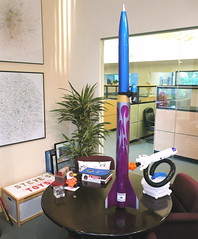
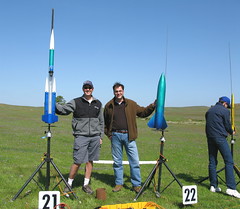
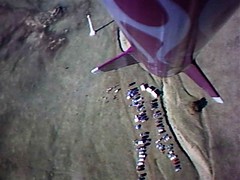
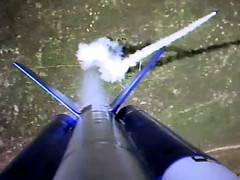



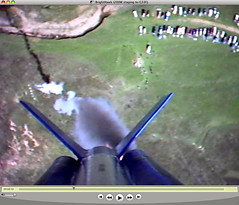
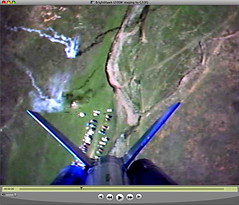

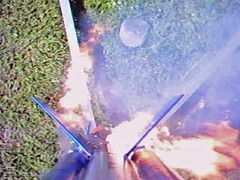

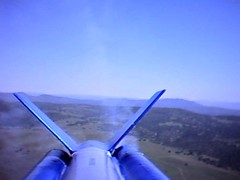

These are enjoyable to watch, but I am curious what you think of the egg fairing - is it to protect the camera from wind?
The half-egg fits the diameter of the cylindrical camera perfectly. So it looks good as a rocket shaped camera. =)
(I realize that in these photos, which was camera #3 for me, I used the stubby side of the egg. For camera #4, I am back to the more elongated half of the egg, and it looks better.)
I was also wanting to minimize drag and vibration on the camera unit. A flat front face would not slip through the air as well, and would potentially flutter at high speeds.
The egg certainly looks better than a bare camera. I asked because I have this thought that having the trailing part tapered is more aerodynamic than the leading part (but I don't know much about this).
As for writing to disk - maybe one of those flip or aiptech cameras might do better at flushing the data to the card (but I have not tested this).
Great rocketry, great photography.
Dick's Rocket Dungeon did a post and link for this site.
Are you still having issuea with parachute spin on your vid payloads? Email me back, I have a couple suggestions.
Ken Kryszak
TRA 00264 L2